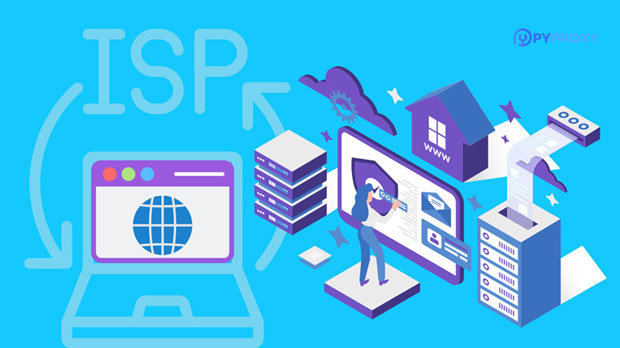What is the difference between a free online SOCKS5 proxy and a VPN?
When it comes to online privacy and security, two commonly used tools are free online socks5 proxies and Virtual Private Networks (VPNs). Though both of these services can help mask your IP address and improve anonymity online, they function differently and offer varying levels of protection. Understanding the distinctions between SOCKS5 proxies and VPNs is crucial for anyone concerned about online privacy, internet censorship, or data security. In this article, we will explore their key differences, advantages, and potential drawbacks, providing you with a deeper understanding of each option. 1. What is a socks5 proxy?A SOCKS5 proxy is a type of internet protocol that facilitates secure connections by relaying data between the client and the server. Unlike traditional HTTP proxies, SOCKS5 proxies operate at a lower level and can support all types of internet traffic, including web browsing, P2P file sharing, and other protocols. SOCKS5 does not modify data packets, making it a faster and more flexible option compared to other proxy protocols. It is commonly used for tasks that require anonymity and bypassing geo-restrictions, such as streaming or torrenting.2. What is a VPN?A VPN, or Virtual Private Network, is a service that creates a secure, encrypted tunnel between the user’s device and the internet. VPNs encrypt all data traffic and route it through a remote server, effectively masking the user’s IP address and securing their online activity from potential hackers, third parties, and government surveillance. VPNs are often used for privacy, securing public Wi-Fi connections, and bypassing censorship or geo-blocks. Unlike SOCKS5 proxies, VPNs offer a higher level of protection due to their strong encryption.3. Key Differences Between SOCKS5 Proxy and VPNThere are several key differences between SOCKS5 proxies and VPNs, particularly in terms of their functionality, security, and use cases:3.1. EncryptionOne of the most significant differences between SOCKS5 proxies and VPNs is encryption. A SOCKS5 proxy does not encrypt the data it transfers, meaning that it does not provide any significant level of security. It merely masks your IP address, making your online presence more anonymous but not necessarily more secure. On the other hand, a VPN encrypts your internet traffic, ensuring that your data is unreadable to anyone who might intercept it, such as hackers or government entities. This makes VPNs far more secure than SOCKS5 proxies.3.2. Speed and PerformanceBecause SOCKS5 proxies do not encrypt data, they typically offer better speed and lower latency compared to VPNs. This makes them a popular choice for activities that require minimal delay, such as gaming or high-speed downloads. Since a VPN encrypts and decrypts all data traffic, it can sometimes cause a slight decrease in speed, especially when connecting to distant servers. However, this performance impact is often negligible with a high-quality VPN service, and the security benefits usually outweigh the speed loss.3.3. CompatibilitySOCKS5 proxies are highly versatile in terms of compatibility. They can be used for a variety of applications, including web browsing, torrenting, gaming, and more. VPNs, while also compatible with many devices and applications, require dedicated software or configuration, and are generally used for securing entire internet connections. A VPN can cover all your internet traffic, while a SOCKS5 proxy is typically configured for individual apps or services.3.4. SecurityAs mentioned earlier, security is a major distinction between these two services. A SOCKS5 proxy only provides anonymity by changing your IP address and is not designed for secure data transmission. This means that your data is still vulnerable to eavesdropping, particularly on untrusted networks. VPNs, however, use strong encryption protocols to protect your data and ensure your online activities remain private and secure. VPNs also help protect you from DNS leaks and other potential vulnerabilities that SOCKS5 proxies cannot address.4. Use Cases and Practical ApplicationsThe use cases for SOCKS5 proxies and VPNs can overlap in some areas, but each tool is better suited for different scenarios.4.1. SOCKS5 Proxy Use CasesSOCKS5 proxies are best suited for users who prioritize speed and flexibility over security. They are often used for:- Bypassing Geo-restrictions: SOCKS5 proxies can help users access content restricted to certain regions, such as streaming services, by masking their IP address.- Torrenting: Since SOCKS5 proxies do not encrypt traffic, they allow for faster download speeds when torrenting, making them a popular choice among users who download large files.- Gaming: Users who need a low-latency connection for gaming might choose SOCKS5 proxies to reduce lag without compromising on speed.4.2. VPN Use CasesVPNs are ideal for users who need a secure and private online experience. They are commonly used for:- Protecting Personal Privacy: VPNs ensure that your personal information remains encrypted, protecting it from hackers, ISPs, and government surveillance.- Securing Public Wi-Fi: VPNs are widely used to secure online activities when connected to public Wi-Fi networks, such as in cafes or airports.- Bypassing Censorship and Geo-blocks: VPNs are also used to bypass government censorship or access websites restricted in certain regions, offering greater security compared to SOCKS5 proxies.5. Advantages and DisadvantagesEach tool comes with its own set of pros and cons, depending on what you’re looking for.5.1. SOCKS5 Proxy Advantages- Faster Performance: Without encryption, SOCKS5 proxies typically provide faster speeds.- Flexibility: SOCKS5 proxies can work with a variety of applications, making them versatile for different use cases.- Lower Cost: Many SOCKS5 proxies are available for free or at a lower cost than VPNs.5.2. SOCKS5 Proxy Disadvantages- Lack of Security: The lack of encryption means that your data is unprotected, making it vulnerable to interception.- Limited Anonymity: While a SOCKS5 proxy can mask your IP address, it doesn't offer full anonymity or protection.5.3. VPN Advantages- Enhanced Security: VPNs provide robust encryption, ensuring secure communication over the internet.- Full Anonymity: VPNs hide your entire internet traffic, making it difficult for anyone to track your activities.- Bypass Censorship Safely: VPNs are more effective at bypassing regional restrictions and censorship while protecting your privacy.5.4. VPN Disadvantages- Reduced Speed: Encryption can reduce internet speeds, although this is typically minor with high-quality VPNs.- Cost: Good VPN services are generally not free, and quality ones come with a monthly or yearly subscription fee.6. ConclusionIn summary, both SOCKS5 proxies and VPNs have their own strengths and weaknesses, and the best choice depends on your specific needs. If you are looking for fast, flexible, and low-cost solutions for activities like torrenting or bypassing geo-restrictions, a SOCKS5 proxy might be the better option. However, if you are concerned about security, privacy, and protecting your data from potential threats, a VPN is the more secure and comprehensive solution. Always consider your priorities—whether that’s speed, privacy, or cost—before choosing between these two options.
2025-01-07

























































